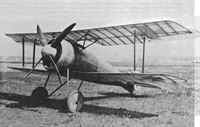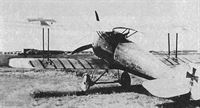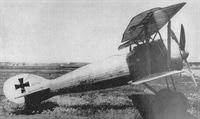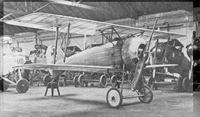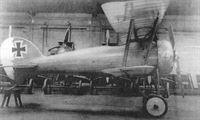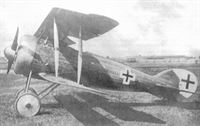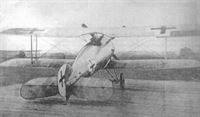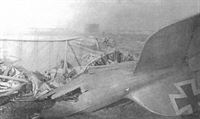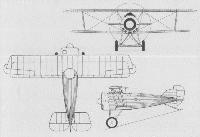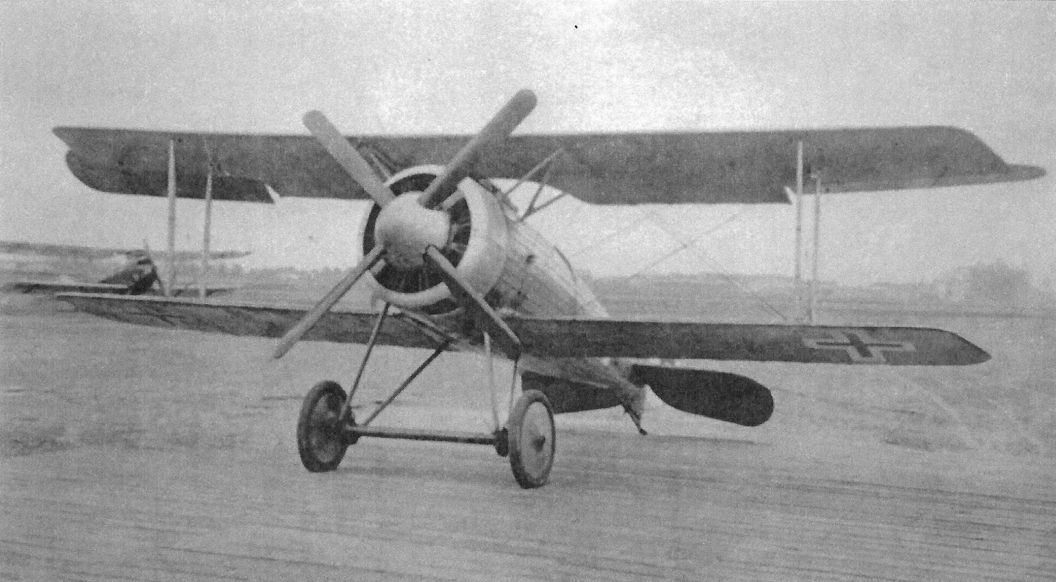
Описание
Страна: Германия
Год: 1918
Fighter
O.Thetford, P.Gray German Aircraft of the First World War (Putnam)
L.F.G. Roland D IX (first version)
The first of three D IX prototypes, No. 3001/18, was fitted with 160 h.p. Siemens-Halske Sh III geared rotary engine. It competed in the second D types Competition in the summer of 1918. Span, 8.92 m. (29 ft. 3 1/8 in.). Area, 18.48 sq.m. (199.5 sq.ft.). Weights: Empty, 534 kg. (1,175 lb.). Loaded, 754 kg. (1,658 lb.). Climb, 5,000 m. (16,400 ft.) in 16.4 min., 6,000 m. (16,680 ft.) in 23 min. Armament, twin Spandau machine-guns.
L.F.G. Roland D IX (second version)
Differing from the first prototype, this second machine had much larger tail surfaces and unbalanced ailerons. Engine now installed was 210 h.p. Siemens-Halske IIIa. Armament, twin Spandau machine-guns.
L.F.G. Roland D IX (third version)
This third, and final, D IX prototype differed from the second machine in having a large horn-balanced rudder and overhung, balanced ailerons as on the first prototype. Engine, 210 h.p. Siemens-Halske IIIa geared rotary. Armament, twin Spandau machine-guns.
L.F.G. Roland D XIV
Powered with the 170 h.p. Goebel Goe IIIa eleven-cylinder rotary engine, the D XIV (No. 3003/18) was a development of the D IX. Span, 9.0 m. (29 ft. 6 3/8 in.). Area, 23 sq.m. (248 sq.ft.). Armament, twin Spandau machine-guns.
Описание:
- O.Thetford, P.Gray German Aircraft of the First World War (Putnam)
- W.Green, G.Swanborough The Complete Book of Fighters
- J.Herris Roland Aircraft of WWI (A Centennial Perspective on Great War Airplanes 9)
Фотографии
-
J.Herris - Roland Aircraft of WWI /Centennial Perspective/ (9)
Roland D.IX 226/18 fighter prototype.
-
J.Herris - Roland Aircraft of WWI /Centennial Perspective/ (9)
The Roland D.IX fighter prototype was powered by the 160 hp Siemens-Halske Sh.III counter-rotary. This first prototype, 225/18, with overhung ailerons is the aircraft that crashed at the First Fighter Competition.
-
J.Herris - Roland Aircraft of WWI /Centennial Perspective/ (9)
The Roland D.IX 225/18 fighter prototype crashed at the First Fighter Competition.
-
J.Herris - Roland Aircraft of WWI /Centennial Perspective/ (9)
The Roland D.IX fighter prototypes were subjected to the same control surface experiments as the Roland D.VI and D.VII to optimize maneuverability and flying qualities. D.IX 226/18 demonstrate one of different tail configurations.
-
J.Herris - Roland Aircraft of WWI /Centennial Perspective/ (9)
L.F.G. Roland D IX (second version)
-
J.Herris - Roland Aircraft of WWI /Centennial Perspective/ (9)
The revised Roland D.IX 3001/18 fighter prototype powered by the 160 hp Siemens-Halske Sh.III was entered in the Second Fighter Competition. Its vertical tail configuration was similar to some of the D.VI and D.VII tail configurations; not a surprise since all were designed at nearly the same time and with the same technology. The major differences between the types were the engines fitted. The D.VI used a production engine and went into production and operational service. Using experimental engines, the D.VII and D.VIII were unreliable and were abandoned. Although the D.IX used an engine just going into production, it had no advantages over the similarly-powered SSW D.III and Pfalz D.VIII, both of which were already in production, so the Roland D.IX program was also terminated.
-
J.Herris - Roland Aircraft of WWI /Centennial Perspective/ (9)
The revised Roland D.IX 3001/18 fighter prototype powered by the 160 hp Siemens-Halske Sh.III was entered in the Second Fighter Competition.
-
J.Herris - Roland Aircraft of WWI /Centennial Perspective/ (9)
The Roland D.IX fighter prototypes were subjected to the same control surface experiments as the Roland D.VI and D.VII to optimize maneuverability and flying qualities. What appears to be D.IX 3001/18 demonstrate one of different tail configurations. D.IX 3001/18 also evaluated a third tail configuration.
-
M.Dusing - German Aviation Industry in WWI. Volume 1 /Centennial Perspective/ (84)
Roland D.XIV prototype with Goebel Goe III high-altitude engine for evaluation.
Basically similar to the D XIII, the D XIV was powered by the unsatisfactory Goebel rotary. -
J.Herris - Roland Aircraft of WWI /Centennial Perspective/ (9)
The Roland D.XIV 3003/18 fighter prototype powered by the 160 hp Goebel Goe.III was entered in the Second Fighter Competition. The D.XIV was very similar to the Roland D.IX powered by the production 160 hp Siemens-Halske Sh.III.
-
O.Thetford, P.Gray - German Aircraft of the First World War /Putnam/
L.F.G. Roland D XIV
-
J.Herris - Roland Aircraft of WWI /Centennial Perspective/ (9)
The Roland D.XIV 3003/18 fighter prototype powered by the 160 hp Goebel Goe.III was entered in the Second Fighter Competition. Problems with the experimental engine dogged the aircraft, limiting its flights and eliminating it from competition. The tight cowling with few inlet holes would seem to limit the flow of cooling air.
-
J.Herris - Roland Aircraft of WWI /Centennial Perspective/ (9)
The crash of the Roland D.IX fighter prototype at the First Fighter Competition was the result of a freak accident.
-
W.Green, G.Swanborough - The Complete Book of Fighters
The second D IX with enlarged, horn-balanced rudder.


